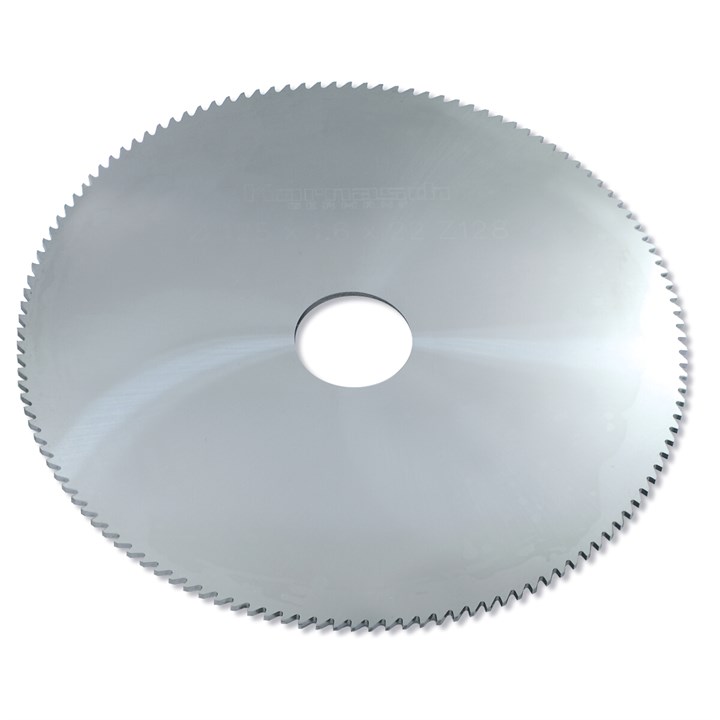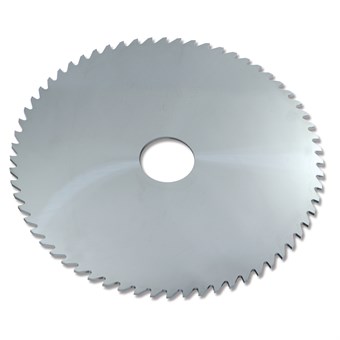- Home
- |
- Products
- |
- Sawing
- |
- Circular Saw Blades
- |
- DIN Solid Carbide Circular Saw Blades
- |
- Solid Carbide Circular Saw Blade similar DIN 1837 A
Solid Carbide Circular Saw Blade similar DIN 1837 A
Product Description
![]()
Sale Articles represent the most economical choices on the Karnasch website. Benefit from the price advantages in all Karnasch product ranges. From end mills, drills, countersinks and rotary burrs over saws, hole cutting machines and straight grinders up to coolants and further accessories.
Full carbide circular saw blades should only be used on stable and low-vibration machines (preferably milling machines).
The circular saw blades must be firmly clamped between precisely evenly running clamping flanges that are as large as possible (receptacle holders, see page 708).
Lateral pressure and use on machines with manual infeed must be avoided.
For steel machining, particularly fast cooling is recommended. Insufficient cooling will lead to premature tool wear, crack formation and tool break.
When chipping NF metals, spray mist lubrication can be used.
Cast iron and plastics must be machined dry.
If this is observed, the cutting speed as compared to the HSS-DIN circular saw blades can be increased up to four-fold.
Usage:
Main field of application:
- This shape is mostly used for fine slotting and cutting works (micro-mechanics and jewellery).
- Excellent also for screw slotting.
- For cutting and slotting thin walled profiles and short chipping work pieces made of stainless steel, steel, cast iron, non ferrous metals, plastics.
Maximum recommended cutting depth approx. 3 mm
- So basically for low machining depths or short slots.
- Feed per tooth: 0,005-0,05 according to material, thickness and global rigidity
Cooling:
We recommend using highly effective cooling when cutting with solid carbide tools. If the cooling is not sufficient or is irregular in nature, this can cause
fractures in the tools or even result in complete failure. When in doubt, use water-oil emulsions or cutting oil.
Exception: Grey cast iron is usually machined while dry and plastics are also cut dry. Occasionally, compressed air or water may be used. Exercise caution
with magnesium alloys. Magnesium may explode if it comes into contact with water. Therefore, always cut magnesium alloys while they are dry.
Feed rates:
As a guideline, use a feed rate per saw tooth of 0.005 mm for very hard materials and 0.05 mm for softer non-ferrous metals. For a metal of typical hardness, start with approx. 0.01 mm per tooth – i.e., much slower than with high speed steel. Depending on the results you achieve, you can reduce or increase the feed rate slightly. Your choice of feed rate is affected by many unpredictable factors. The machinability of the material plays a role as does the speed, feed type, workpiece clamping and the state of your machines and tools. Additional factors include the number of saw teeth that are engaged at any given moment, the saw diameter and saw width. Therefore it is only possible to provide approximate values. Depending on the machining conditions, you may have to increase or decrease this value. When using Karnasch solid carbide tools in particular, lower feed rates and finer tooth pitches will result in improved cutting surfaces. Depending on the material being processed, start with the feed rate given in the table below. Multiplying the number of teeth with the speed gives the feed rate to be set on your machine in mm/min.
For non-ferrous metals, you can also use spray oil lubrication if this is available on the machine being used: or type: 60 1150 (Mecut spray).
Product Downloads
There are no download types with downloads for this product.


